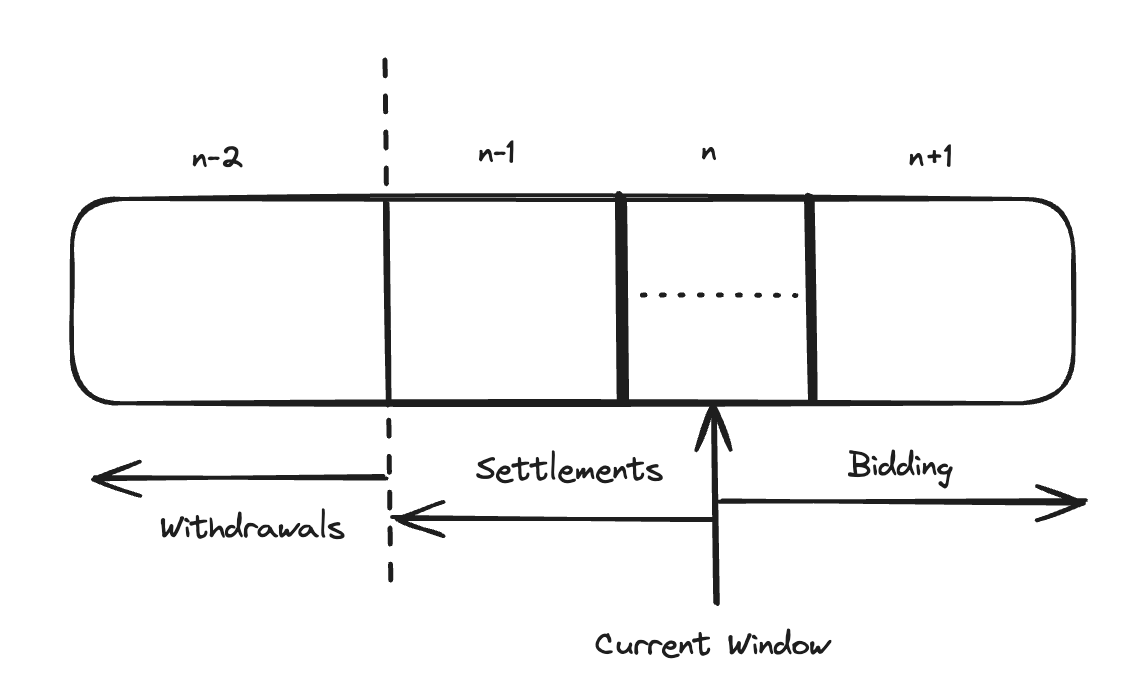Current window number
The window number for a given L1 block can be calculated via the following formula, whereblocksPerWindow is equal to 10 and blockNumber is the L1 block number for which the bidder wants to bid:
Minimum Deposit
Since deposits are split across L1 blocks, bidders have to deposit at least 10 times the amount they want to bid for a single block. In the case of autodeposit, the deposits would be locked for around 3 windows at a time. Therefore, the total amount locked would be 30 times the amount.Withdrawal Time
The earliest withdrawal time can be calculated as follows: the withdrawal start time plus 20 L1 blocks (which is 240 seconds or 4 minutes) and the oracle lag of 10 L1 blocks (which is 120 seconds or 2 minutes), totaling 360 seconds or 6 minutes. Therefore, the total time before funds can be withdrawn is approximately 30 blocks (6 minutes) from the initial deposit.Deposit/Withdrawal Flow

Diagram Description
Timeline of Blocks
- The horizontal axis represents a sequence of windows.
- Windows are labeled as
n-2,n-1,nandn+1, indicating their position relative to the current windown.
Current Window
- The “Current Window” is the interval within which bidding occurs.
- The window consists of 10 L1 blocks.
Bidding Phase
- Bidding occurs in the current window, starting from the current block
nand extending into the future blocks (n+1, etc.). - The arrow labeled “Bidding” points to the right, indicating that bidding continues into future blocks.
Settlements Phase
- Settlements happen after the bidding window closes.
- The arrow labeled “Settlements” points downward, showing the transition from the bidding phase to the settlement phase.
Withdrawals Phase
- Withdrawals occur after settlements are completed.
- The arrow labeled “Withdrawals” points to the left, indicating the final phase where bidders can withdraw their remaining funds.

